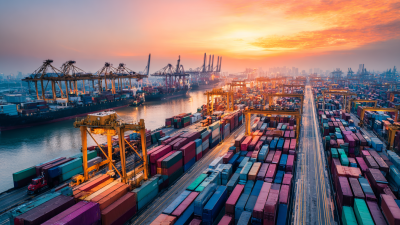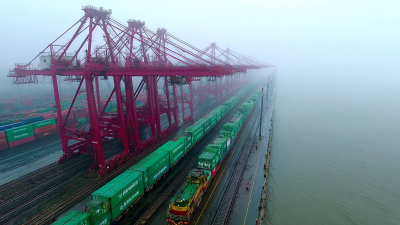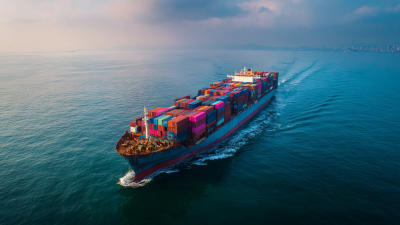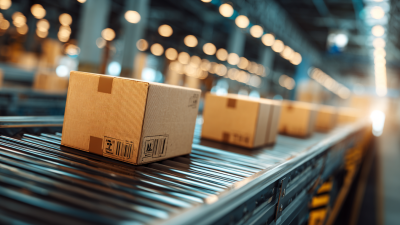As we embark on a new era of transportation, Railway Transport stands at the forefront of sustainable and efficient travel solutions. According to the International Union of Railways, global rail transport accounts for approximately 7% of all freight and 8% of passenger transport worldwide, making it a pivotal mode of transportation in reducing carbon emissions. The shift towards electrification and innovative technologies is set to reshape the landscape of railway systems, ensuring they not only meet the demands of modern commuters but also contribute to environmental sustainability.
Recent industry reports highlight that investments in railway infrastructure have surged, with anticipated growth in the sector reaching around $200 billion by 2025. Innovations such as high-speed trains, autonomous rail systems, and smart ticketing solutions are redefining what passengers can expect from their journeys. Moreover, the emergence of digital technologies, including IoT and big data analytics, is optimizing operational efficiency and enhancing the overall travel experience. As we explore the future of Railway Transport, it becomes evident that these innovations are not merely enhancing existing systems but are also paving the way for a completely reimagined and interconnected travel environment.

High-speed rail (HSR) is at the forefront of advancements in global connectivity, revolutionizing how we traverse vast distances. Countries like Japan, France, and China have set benchmarks with their extensive HSR networks, showcasing the technology’s potential to significantly reduce travel times. As urbanization continues to rise, regions are increasingly investing in high-speed rail systems, not only to enhance mobility but also to boost their economies by linking major cities and fostering tourism and trade.
Current trends indicate a growing emphasis on sustainability within railway transport, particularly through electrification and energy-efficient technologies. Innovations such as maglev trains and automated systems are paving the way for even faster and more reliable services. Future projections suggest that with continued investment and development, high-speed rail could expand to regions currently underserved by traditional rail systems, further fostering international connections and creating a more integrated global transport network.
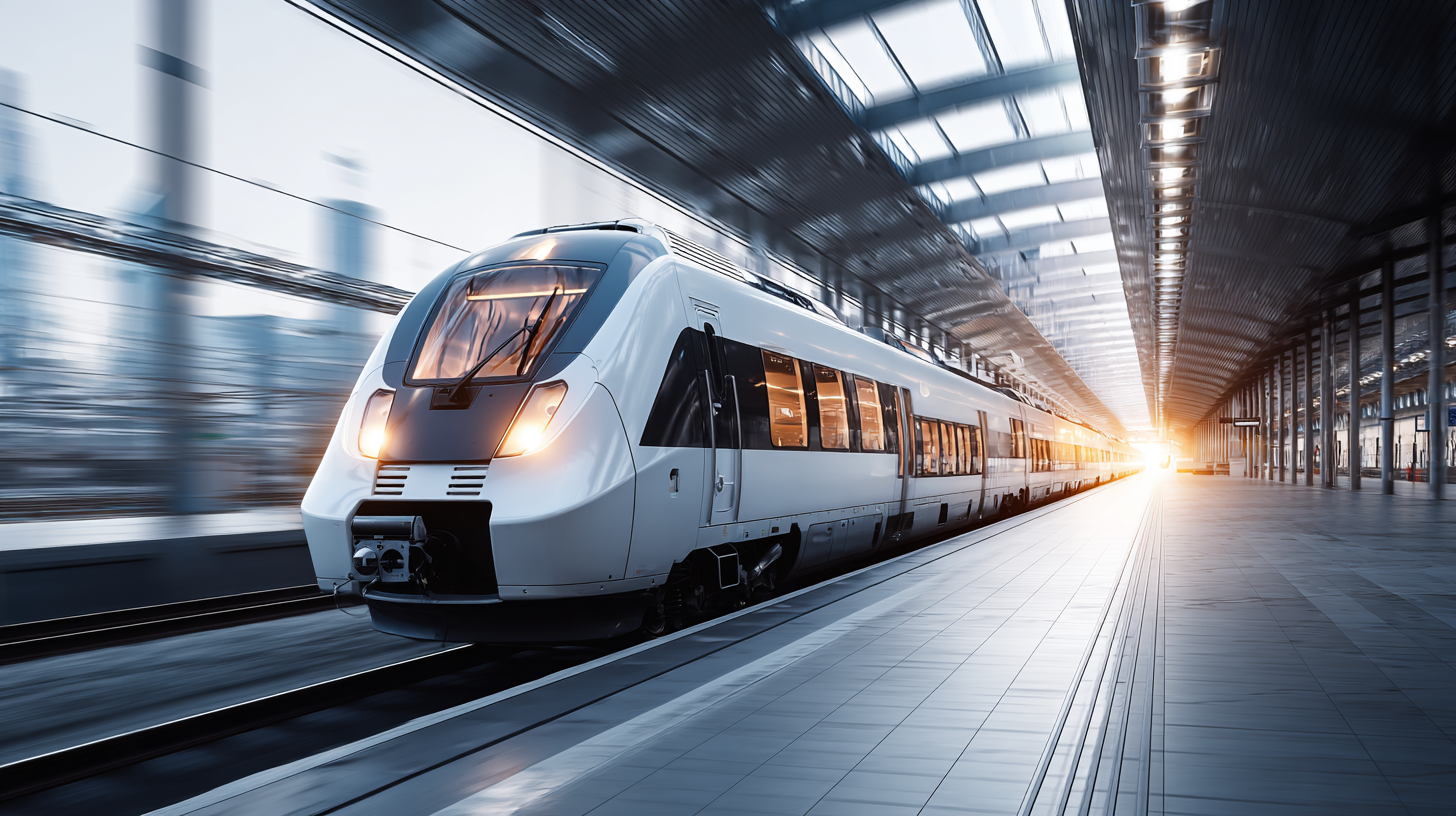
The integration of artificial intelligence (AI) and big data analytics in railway transport is revolutionizing operational efficiency. By harnessing the power of AI, railway systems can analyze vast datasets in real-time, allowing for predictive maintenance, which helps prevent system failures before they occur. This proactive approach not only enhances safety but also reduces operational downtimes, leading to a more reliable service for passengers.
Moreover, big data analytics enables the optimization of scheduling and resource allocation. By examining passenger flow patterns and environmental conditions, railway companies can adjust train schedules and capacity dynamically, ensuring that services meet demand without excess resource expenditure. This data-driven strategy not only improves customer satisfaction through reduced wait times and overcrowding but also supports sustainable practices by minimizing energy consumption and emissions. As the railway industry continues to embrace these innovations, the future holds promise for more efficient, safer, and greener transportation networks.

The future of railway transport is increasingly intertwined with sustainable practices, emphasizing innovations in green technology and renewable energy sources. One of the most promising developments is the integration of hydrogen fuel cell technology, which produces zero emissions while providing efficient power for trains. This technology not only significantly reduces the carbon footprint of rail travel but also enhances operational efficiency by using hydrogen as a clean fuel alternative. Rail operators are exploring partnerships with energy companies to create hydrogen production facilities, enabling a seamless transition towards sustainable fuel sources.
In addition to hydrogen, the incorporation of solar panels and wind turbines along railway corridors is transforming how energy is harnessed and utilized. Solar farms can be installed on station rooftops and alongside tracks, providing clean energy that powers station facilities and trains. Meanwhile, innovative designs for wind energy capture along railways are also being trialed, promising to contribute to a greener operational model. Together, these advancements are paving the way for a more sustainable railway system, ensuring that the future of rail transport not only meets evolving passenger needs but also aligns with global efforts towards environmental stewardship.
This bar chart illustrates the percentage contribution of various sustainable technologies in railway transport, highlighting the advancements in green technology and renewable energy sources.
As we delve into the future of railway transport, one of the most groundbreaking aspects is the design of smart stations. These futuristic hubs aim to create user-centric and automated experiences that cater to the evolving needs of passengers. Innovations such as interactive kiosks and augmented reality wayfinding will empower travelers to navigate complex station environments with ease. This technology not only streamlines the travel experience but also enhances safety by providing real-time information on train schedules and platform changes.
**Tip:** When traveling through smart stations, make use of mobile apps that sync with the station's systems for real-time updates on your journey. This can significantly reduce wait times and improve overall efficiency.
Additionally, these stations will integrate smart technologies like biometric scanning and AI-driven service robots, making operations seamless and personalized. Imagine a station where your travel preferences are recognized as you approach, guiding you through your journey and even suggesting the best routes or amenities based on your past travel behavior. This level of personalization can transform the travel experience from merely functional to truly enjoyable.
**Tip:** Always keep your travel preferences updated in your travel apps to take full advantage of personalized services. This could include preferred routes, meal choices, and accessibility options to ensure a smooth transit experience.
| Dimension | Feature | Impact on Passenger Experience | Future Trends |
|---|---|---|---|
| Smart Ticketing | Mobile Apps for Seamless Booking | Reduced wait times and enhanced convenience | Integration with AI for personalized offers |
| Automated Check-In | Self-Service Kiosks | Faster boarding process | Voice-activated assistants for guidance |
| Real-Time Updates | Digital Display Boards | Enhanced communication on train schedules | Augmented reality applications for navigation |
| Comfort Enhancements | Smart Seating | Adjustable seating for personalized comfort | Data-driven ergonomic designs |
| Safety Features | Enhanced CCTV and Monitoring Systems | Increased passenger safety and security | AI for real-time threat detection |
| Sustainability | Energy-Efficient Train Designs | Lower carbon footprint of journeys | Electric and hybrid train models |
The advent of autonomous trains is set to revolutionize the rail industry, significantly enhancing safety and operational cost efficiency. Innovations such as autonomous electric trains and advanced robotic systems exemplify this change. For instance, recent developments have showcased robots designed to operate on railway tracks, minimizing human presence in hazardous environments and thereby reducing maintenance risks. This technological integration helps in maintaining safety standards while ensuring that infrastructure is kept in optimal condition.
Moreover, companies are actively investing in autonomous fleets and cutting-edge sensor technology to streamline inspections and enhance operational efficiencies. The implementation of these systems is reported to lower operational costs significantly—some estimates suggest reductions up to 60%. As the railway sector embraces artificial intelligence and robotics, the focus on safety and efficiency becomes paramount, ensuring that autonomous operations not only enhance service delivery but also cultivate a safer travel experience for passengers.

